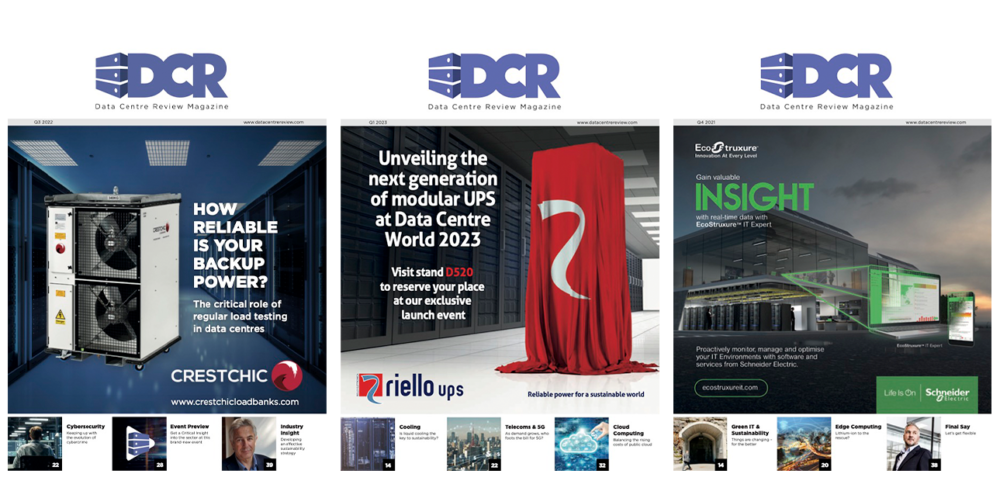Pete Miller, Sales and Business Development Manager at ETB Technologies, explains how refurbished IT solutions could offer organisations a way to tackle rising data demands, cybersecurity risks, and sustainability challenges in today’s ever-evolving cloud landscape.
Look up ‘strategy’ in the dictionary and pretty much any definition you’ll find will refer to the importance of taking a long-term approach. In fact, organisations only operating in the short-term are often criticised for lacking a strategic outlook. But it can be extremely difficult to plan years, or even months, ahead if the path you’re plotting feels like it’s been laid on shifting sands. Over the last decade, this has been exactly the challenge businesses have had to come to terms with when it comes to cloud strategy, data management and storage.
Unprecedented growth in data use across the board has forced businesses to start treating data management as a crucial utility, similar to water and power. However, the sudden ascent into remote working, as a result of the pandemic, sent organisations hurtling towards the cloud, while cybersecurity risks and data demands forced rapid adjustments.
Now, as things once again find something of an even keel, companies are reevaluating how to balance cost, performance, and sustainability. The strategic use of refurbished technology is emerging as a key way to make this balanced approach practical and affordable for businesses, especially those that have already adapted multiple times in recent years.
Dealing with the cost of data overload
As businesses generate and store more data than ever before, the cost of cloud storage has climbed steadily upward. Driven by the sheer volume of data, global cloud spending reached more than $80 billion last year and shows no sign of slowing. Many companies find themselves in a precarious position, balancing rising costs with the need for reliable data access.
Hybrid cloud is fast becoming the go-to strategy for combating these challenges, offering businesses the flexibility to store frequently accessed or sensitive data on-premises while using the cloud for non-critical workloads. Refurbished storage solutions could ease this transition, providing robust and cost-effective options for businesses looking to optimise data environments without blowing budgets.
Dealing with the security question
The pandemic-era rush to the cloud brought scalability and flexibility but, alongside rising costs, also exposed businesses to increased cybersecurity risks. Cyber breaches surged, leaving organisations vulnerable as they raced to adopt new technologies. For industries like finance and healthcare, the stakes were even higher, with sensitive data and strict compliance requirements coming into play.
This has led to on-premise infrastructure re-emerging as a stabilising force, offering a secure environment for the most critical data. However, this comes with its own cost, as businesses face increased spend on bare metal components. The investment can be daunting when added to the cost of cloud and generally increasing prices elsewhere. But, once again, refurbished technology can be a sensible choice, enabling businesses to modernise or diversify their infrastructure affordably. By incorporating high-quality refurbished servers and storage systems, organisations can keep sensitive data under tight control without overspending on new equipment.
The steady track towards greener IT
As businesses navigate the twists and turns of their IT strategies, sustainability is becoming a top priority. The environmental impact of e-waste and energy consumption is under increasing scrutiny, and companies are under pressure to meet ambitious ESG goals. The flux and change in approach to cloud strategy has certainly not helped in this regard. For organisations seeking to improve their green credentials, refurbished technology offers a way to reduce carbon footprints and extend the lifecycle of IT equipment without sacrificing on security or cost.
Anticipating what’s next
Looking ahead, the hybrid cloud journey is far from over. Businesses will continue to refine their strategies, ensuring data is in the right place at the right time. With advancements in edge computing and AI workloads, the demand for localised infrastructure will grow. As more organisations consider how they’re going to adapt, refurbished technology can be a key enabler, providing affordable, high-performance options more than capable of matching these emerging needs.
The hybrid model’s flexibility will remain its greatest strength, enabling organisations to navigate the ups and downs of changing demands. Refurbished hardware will play a critical role, offering scalability and sustainability as businesses prepare for the next evolution in IT.



